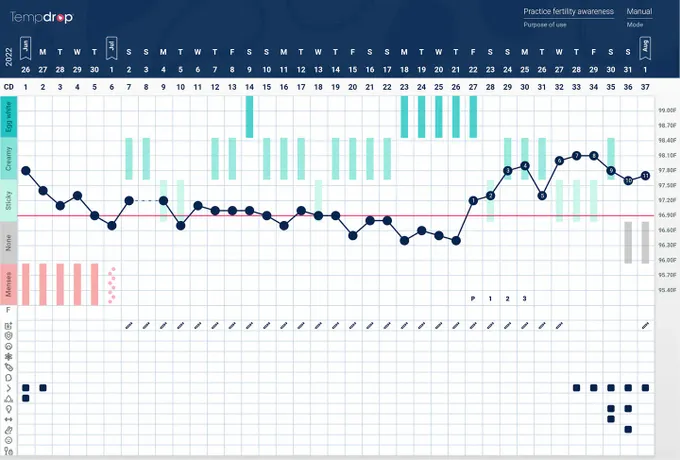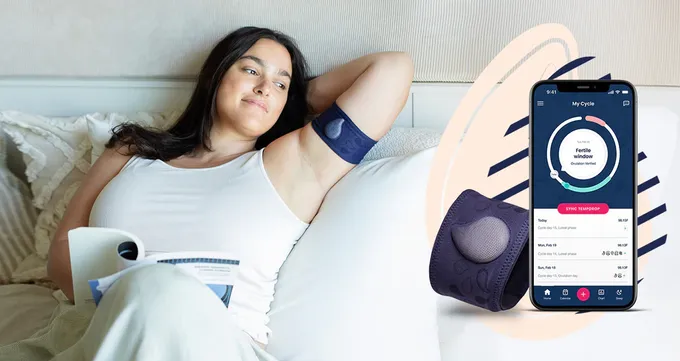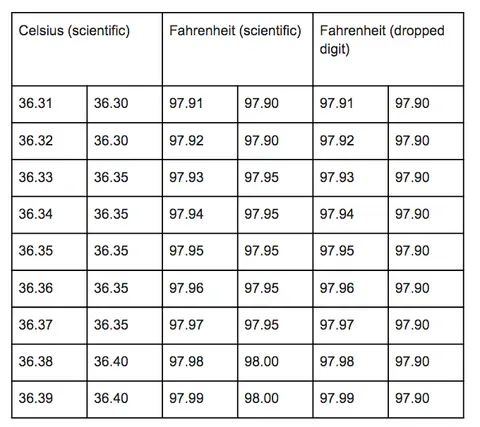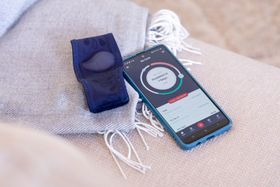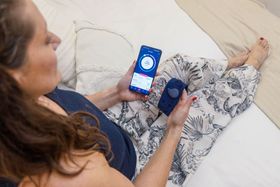What to Know Before You Buy an Oral Basal Body Thermometer
Published February 5, 2025.

Taking your basal body temperature daily with a basal body thermometer is one way of narrowing down the window of ovulation. People use basal body temperature to track ovulation for conceiving, avoiding pregnancy, or tracking their health. There are several factors to consider when buying a basal body thermometer, but it's first important to understand why basal body temperature can be used to track ovulation.
The above chart is an example of an ovulatory cycle, where you can see a distinct temperature rise around ovulation.
After ovulation, your core resting body temperature, also called basal body temperature, rises by a very small amount. This is due to the presence of progesterone acting on our body systems to warm the body up slightly. Ovulation is tracked through basal body temperature retrospectively, meaning you only know it’s happened after the fact. Using both cervical mucus and basal body temperature can narrow down the fertile window even more, and other additional markers of fertility can be helpful in identifying the approximate time of ovulation (typically a 1-3 day window).
Taking your basal body temperature every day gives you an idea of your pre-ovulatory range of temperatures as well as your post-ovulatory range of temperatures. As shown on the above chart, the temperatures don't stay the same every day, but they do stay in a range and that range noticeably changes around ovulation.
A normal temperature shift is at least 0.05C/0.1F. This may seem like a very slight change, but becomes noticeable when cross-checked with cervical mucus and compared to pre-ovulatory temperatures. It's important to note that symptothermal methods of fertility awareness rely on both cervical mucus and basal body temperature. Relying on temperature alone is not recommended for avoiding pregnancy with the majority of methods.
There are several different fertility awareness based methods (FABMs). If you are wanting to buy a basal body thermometer you will want to educate yourself in a symptothermal fertility awareness based method (which uses basal body temperature and cervical mucus). You can either teach yourself by
- Reading a book like Taking Charge of Your Fertility or Sensiplan's Natural and Safe: The Handbook
- Working with an instructor in your method of choice
- Taking an online course
It’s important to note that if you are using fertility awareness to avoid pregnancy, efficacy rates are based on learning with an instructor.
When you look for a basal body thermometer, ensure that it goes to two decimal places and it is indeed a basal body thermometer, not a fever thermometer. A fever thermometer is not sensitive enough to pick up the slight increase in temperature following ovulation - it only rates to two tenths of a degree (X.X0, X.X2, X.X4, X.X6, X.X8). You can take your temperature orally or vaginally, but just make sure you stick with the same one for your whole cycle. If you want to change, do so when you start a new cycle. To get an accurate reading using a regular basal body thermometer (not a Tempdrop), you need at least three hours of consecutive sleep, and you take your temperature at the same time each morning right when you wake up before getting out of bed.
Some thermometers have special features, such as remembering your past temperatures, having a backlight, or connecting to your phone via bluetooth. To start with charting your cycles you don’t need a fancy thermometer, but some of these features make it easier to stick with the habit of taking your temperature (which is a plus!). There may also be certain scenarios that make it more difficult to take your temperature after three consecutive hours of sleep or at the same time - like being a shift worker.
The Tempdrop wearable thermometer is great for things like working night shifts, irregular schedules or postpartum by allowing you to sleep in and not wake up to take your temperature, which is a huge bonus! If you are charting to avoid pregnancy, be wary of thermometers that take your wrist temperature - these are not accurate enough to be used for avoiding pregnancy because they are taking an auxiliary temperature
When charting your basal body temperature, it is advised to round your temperatures. This makes your charts easier to read. In Celsius, you round scientifically to the nearest .00 or 0.05, and in Fahrenheit you round scientifically or drop the last digit.
Find something to record your basal body temperature in, whether it is a paper chart or in an app. Apps that I recommend allow you to chart both cervical mucus and basal body temperature, and are like paper charts on your phone. The Tempdrop app (iOS/Android) allows you to to do this for free! Another great app that Tempdrop automatically syncs with and allows you to manually interpret your cycle markers is the Read Your Body app.
And that’s it! Are you inspired to start taking your basal body temperature? You can start any day if you are cycling naturally. Remember that day 1 is the first day of full bleeding. Do you have questions about basal body temperature? Jump over to Tempdrop's Instagram!
